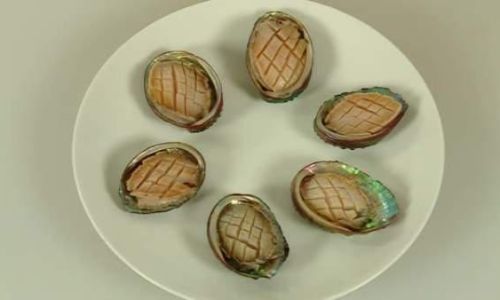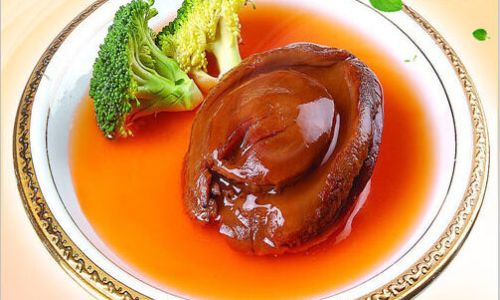Table of content
Lobster, often regarded as the crown jewel of seafood, has captivated palates for centuries with its sweet, succulent meat and luxurious texture. While preparation methods vary—from grilling and steaming to baking—boiling remains one of the most classic and straightforward techniques to achieve perfection. This article delves into the intricacies of boiling lobster, offering step-by-step guidance, expert tips, and creative serving ideas to elevate your culinary skills.
Understanding Lobster Anatomy and Selection
Before diving into the cooking process, selecting a high-quality lobster is paramount. Lobsters are typically sold live, as their meat deteriorates rapidly after death. When choosing, look for specimens with:
- Vibrant color: A healthy lobster boasts a deep blue-green hue (for clawed varieties like the American lobster) or mottled brown (for spiny lobsters).
- Active movement: Legs and antennae should twitch, indicating vitality.
- Intact shell: Avoid lobsters with cracks or holes, as these may signal injury or poor handling.
- Weight: Heavier lobsters tend to have more meat relative to their size.
Size preferences vary: a 1.5-pound lobster serves one person, while larger specimens (2–3 pounds) are ideal for sharing.

Ethical Considerations: Humane Preparation
Boiling lobsters alive is a contentious topic, with animal welfare advocates advocating for stunning methods to minimize suffering. To humanely dispatch a lobster:
- Chill it: Place the lobster in the freezer for 15–20 minutes to induce a dormant state.
- Use a sharp knife: Quickly pierce the cross between the eyes (the “carapace”) to sever the nervous system.
While this step is optional, it ensures a more compassionate cooking process.
Equipment and Ingredients
To boil lobster, gather the following:
- A large stockpot: Capable of holding at least 4–6 quarts of water per lobster.
- Tongs or gloves: For safe handling of hot lobsters.
- Sea salt: Enhances flavor without overpowering the meat.
- Optional additions: Lemon wedges, bay leaves, peppercorns, or beer for aromatic infusions.
The Boiling Process: Step-by-Step
Preparing the Pot
Fill the pot with water, allowing 2–3 inches of space at the top to prevent boiling over. Add 1 tablespoon of sea salt per quart of water—this mimics the lobster’s natural seawater environment. For added depth, toss in a handful of peppercorns, a bay leaf, or a sliced lemon.

Bringing to a Rolling Boil
Cover the pot and bring the water to a vigorous boil over high heat. This ensures rapid cooking, preserving the lobster’s texture.
Submerging the Lobster
Grasp the lobster firmly behind the claws and lower it headfirst into the boiling water. This method reduces splashing and ensures even cooking.
Cooking Times:
- 1-pound lobster: 7–8 minutes
- 25-pound lobster: 9–10 minutes
- 5-pound lobster: 11–12 minutes
- 2-pound lobster: 13–15 minutes
Add 3–4 minutes for each additional pound. Overcooking results in tough, rubbery meat, so set a timer diligently.

Testing for Doneness
The lobster is ready when:
- The shell turns bright red (though some blue-green hues may remain).
- An antennae pulls out easily.
- The meat near the carapace is opaque and firm.
Cooling and Cracking
Transfer the lobster to an ice bath for 5 minutes to halt cooking. Once cooled, twist off the claws and tail. Use kitchen shears to cut through the tail shell lengthwise, then gently extract the meat. For claws, crack them with a nutcracker or lobster cracker, being careful not to shatter the meat.
Serving Suggestions
Classic Accompaniments
- Melted butter: Warm unsalted butter with a squeeze of lemon.
- Garlic butter: Sauté minced garlic in butter and fresh herbs.
- Cocktail sauce: Ketchup blended with horseradish and lemon juice.
Creative Pairings
- Lobster rolls: Toss chopped meat with mayo, celery, and chives; serve on a buttered brioche bun.
- Thermidor-style: Sauté lobster in a creamy brandy sauce and stuff it back into the shell.
- Pasta primavera: Fold lobster into fettuccine with cherry tomatoes, asparagus, and Parmesan.
Wine Pairings
A crisp Chardonnay or a light Chablis complements lobster’s briny sweetness, while a sparkling Prosecco adds effervescence.
Troubleshooting Common Mistakes
- Mushy meat: Overcrowding the pot lowers water temperature, leading to uneven cooking. Use a pot large enough to submerge lobsters fully.
- Tough texture: Overcooking is the primary culprit. Stick to recommended times and test doneness early.
- Bitter taste: Avoid using iodized salt, which can impart a metallic flavor. Opt for kosher or sea salt.
Leftover Lobster: Storage and Repurposing
Store cooked lobster meat in an airtight container for up to 2 days. Use leftovers in:

- Lobster bisque: Simmer shells with vegetables, tomato paste, and cream.
- Quesadillas: Mix meat with cheddar and jalapeños for a gourmet twist.
- Salads: Toss with avocado, mango, and citrus vinaigrette.
Sustainability and Sourcing
Support ethical practices by purchasing lobsters from certified sustainable fisheries. Look for labels like the Marine Stewardship Council (MSC) certification, which ensures responsible harvesting.
Conclusion
Boiling lobster is an art that balances precision with creativity. By respecting the ingredient’s quality, mastering cooking times, and embracing flavor pairings, you can transform this crustacean into a memorable feast. Whether hosting a dinner party or indulging in a solo treat, the rewards of perfectly boiled lobster are undeniable—a testament to the harmony of simplicity and sophistication in the kitchen.
Final Tip: Experiment with global flavors! Infuse cooking liquid with lemongrass and ginger for an Asian-inspired broth, or add saffron and tomato for a Mediterranean flair. The possibilities are as boundless as the ocean itself.






0 comments